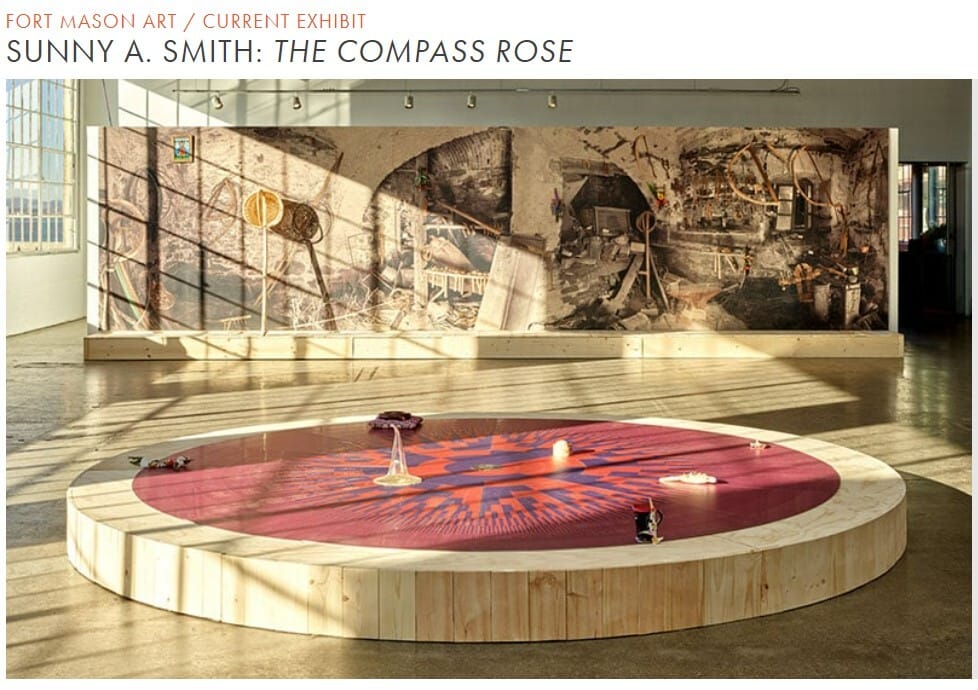
There is an incredible display of historic resonance in Gallery 308 at Fort Mason Center for Arts & Culture (FMCAC) these days, an exhibition of meticulously crafted sculpture along with video and sound works, by the self-described time traveler, Sunny A. Smith.
Sunny A. Smith’s The Compass Rose, is an experience that takes the viewer through a skillfully spun story, which radiates outward in every direction imaginable. Despite this, the installation retains a calm and intentional center to hold space for each tale told.
“What do our ancestors pass on to us when they leave behind possessions and other physical evidence of their existence?”
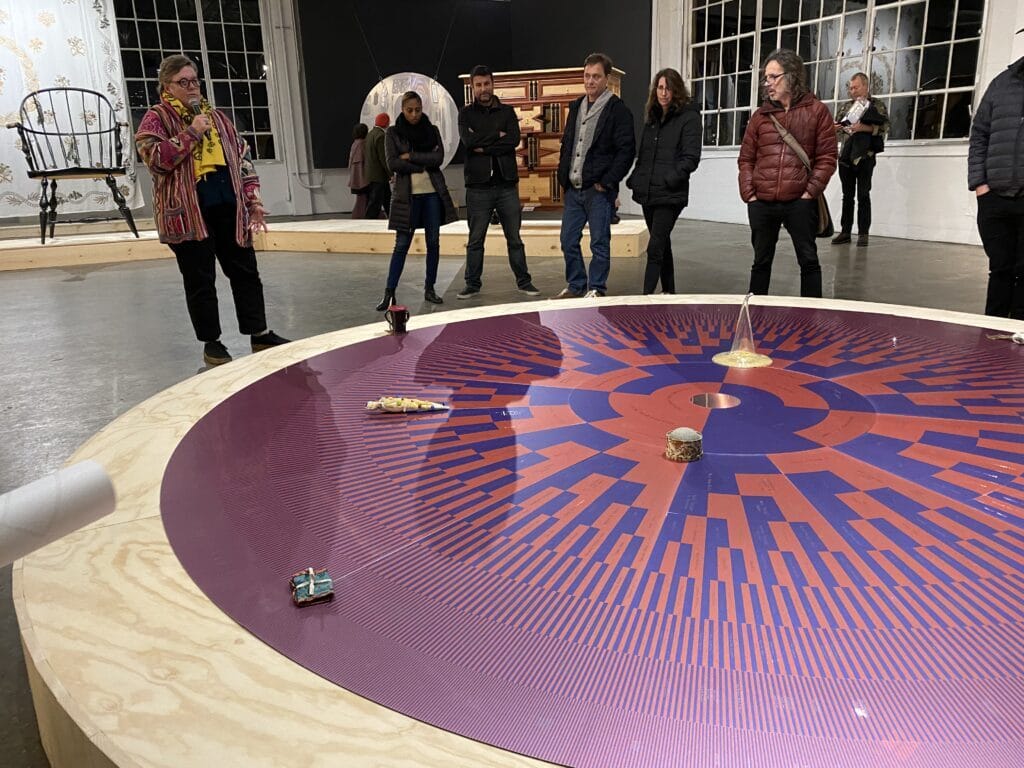
Sunny A. Smith giving a talk at Gallery 308
Sunny A. Smith, is a queer, non-binary artist currently living and working in the Bay Area as an educator, and their new exhibit is configured to be a sacred space to honor Smith’s ancestors. A wall to one side holds what at first appears to be a collection of artifacts, as one might find in a colonial museum. A set of drums sit in one corner, a forlorn blue “evil eye” hangs high above them. An Inkjet print on cloth shows a woman with obscured features above delicately woven baskets.
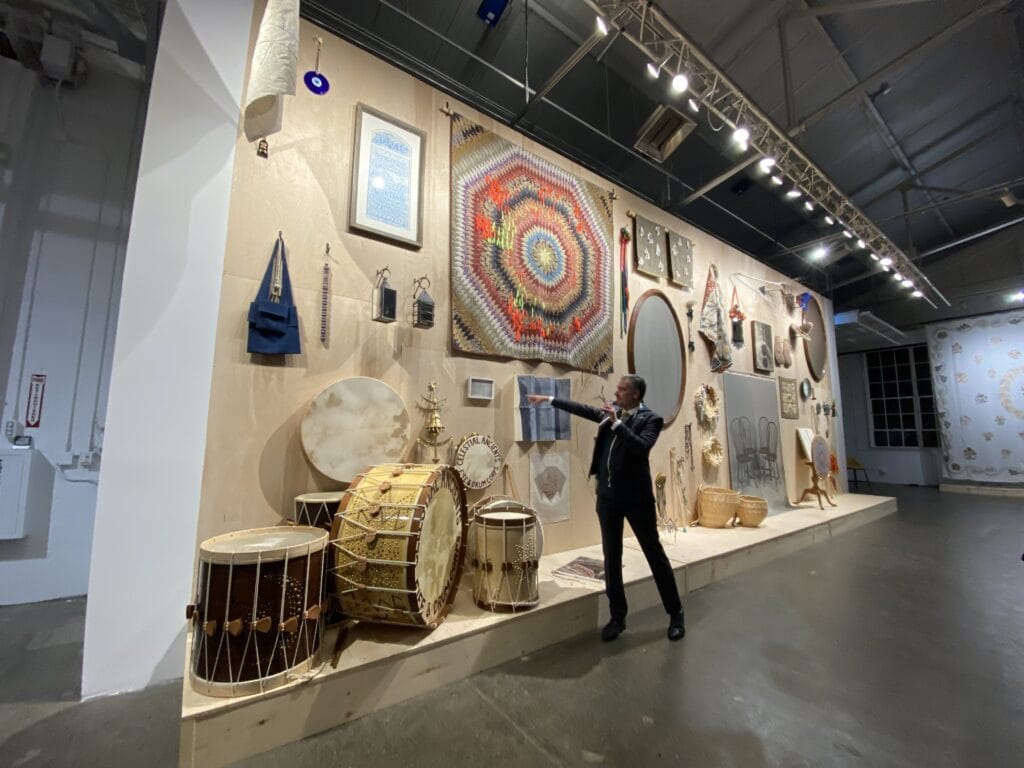
A wall of objects reconfigured from family stories.
However, in response to the red and blue compass rose radiating from the center of the room, this wall becomes a thoughtful altar to Smith’s predecessors, a reanimation of the past.
Can these objects serve as a means of communication, reckoning, or generational healing?

The Compass Rose: drawn from alchemical diagrams, solar pulsar maps, and maritime navigational motifs – charts the known names of Smith’s direct ancestors, more than 700 parents stretching back 13 generations to the first wave of European colonization of North America in the early 1600s.
The Compass Rose on the floor is a circular map of the artist’s ancestry with Smith in the middle. In representing their family in this structure, Smith is reframing the representation of their ancestry in inclusive terms rather than patriarchal terms. This act is revolutionary because it offers an alternative to both a hierarchical and patriarchal telling of history. In each of these “traditional” ways of logging family histories, it is a straight march backward with little deviation. These systems tally marriages and forefathers instead of oral histories and a tangible residue of lives lived. Smith’s exploration of family relies on the alchemy of exploration and the reworking of material things. The show questions what gives an heirloom its power in family lore.
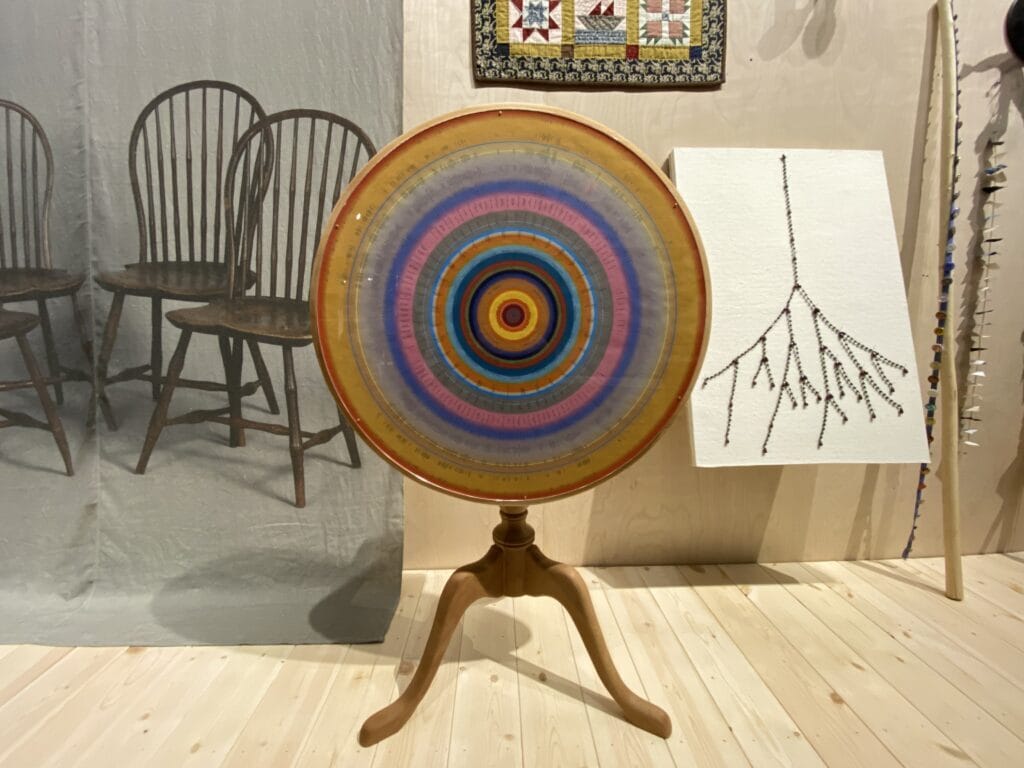
Smith uses many types of maps and navigation tools to chart their family lines.
Of the compass rose in the center, Smith says “As an ancestral mapping system, The Compass Rose began as my attempt to see clearly a holistic portrait of myself and my ancestors as people fundamentally not-from-here: immigrants whose origin story is elsewhere. Since the human genome project was completed in 2003, which effectively proved that race is a social construct with no biological basis, DNA and crowd-sourced online technologies have gained in popularity.
The Compass Rose deals with this emergence of human ancestral genealogy as science, as well as new understandings of generational trauma and how it is expressed through the study of epigenetics. Encompassing the last 400-year period of ongoing colonization, I use the project to chart the known harms my ancestors inflicted upon others, as well as those they experienced directly, vicariously, or through moral injury, in order to better understand what I am carrying from the past into the future.”

Inkjet print on cloth
Smith follows the stories of their family back for thirteen generations. To further understand their family history in regards to colonization Smith followed their family’s line across the globe and backward in time. They went to New England, parts of the South, England, Ireland and finally the Czech Republic.
Behind the Compass Rose sits a large black and white photograph. It is a panoramic image of a blacksmith’s forge. The walls are crumbling but the rusted tools are hung neatly as if waiting for the return of their owner. Smith tells us that this is the address that one of their ancestors who had been a blacksmith would have lived. They were shocked to find the workshop waiting, it seemed, for them.

A portrait of the artist, Sunny A. Smith
Smith examines the crafts that sustained their ancestors such as weaving, blacksmithing, pottery, glasswork, and reimagines them into objects that tell the stories that they have roamed the world to find. The artist seeks to create a new way of holding family history by connecting more to place and spiritual practices. There is a palpable connection to the earth and its life-sustaining materials in so many of the pieces. In the corner of the large photograph is a small image of Saint Wilgefortis, a non-binary saint from Portugal and Galicia. To the left of this is a delicate display of small metal figures that appear to be based on corn husk dolls.
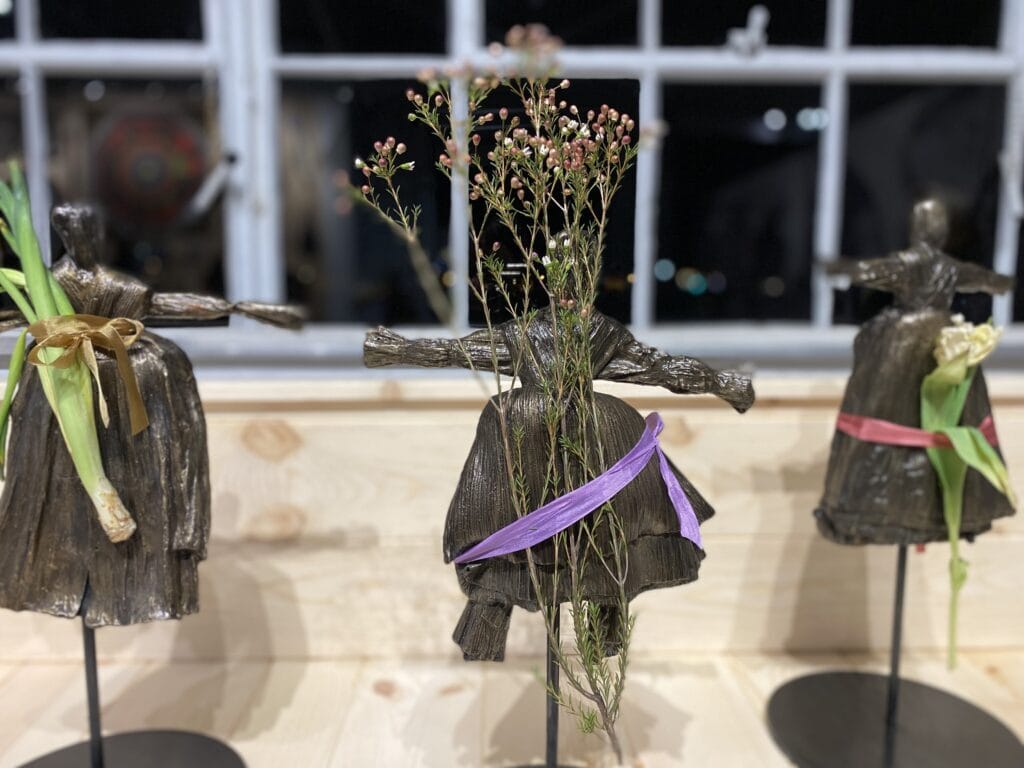
As the viewer moves through the space they will encounter a variety of mediums from film and photographs to weavings. In every object is a careful spiritual intention as well as a question. Can these objects, made new from old stories become a legacy going forward? The Compass Rose will be on view through March 12, 2023.
The exhibition is free and open to the public Wednesday through Saturday, from 12:00 p.m. (noon) to 6:00 p.m., and Sunday, 11:00 a.m. to 5:00 p.m. Gallery 308 is located in Landmark Building A.
Compass Rose Exhibit details: fortmason.org
Learn more about the Artist: sunnyasmith.com
This article is brought to you by Fort Mason Center for Arts & Culture (FMCAC), which hosts an incredible, ever-evolving rotation of artistic programming for over 1.2 million annual visitors that includes theater and dance performances, art installations, as well as educational and cultural classes.
The post Time traveling through The Compass Rose at Fort Mason appeared first on Broke-Ass Stuart's Website.









